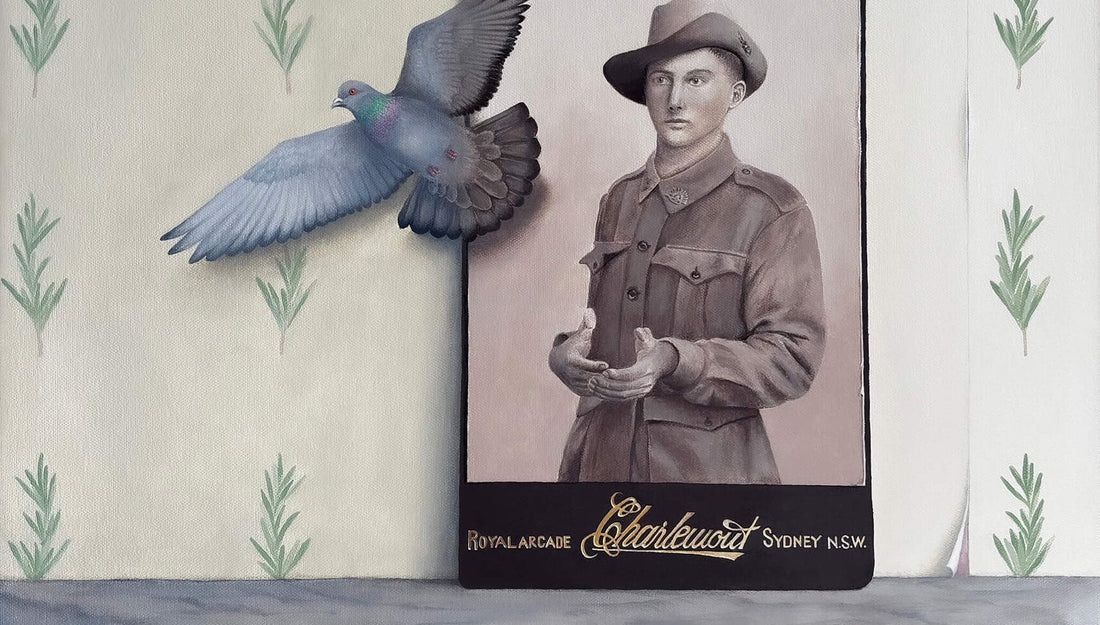
Gallipoli Art Prize 2025 Finalist
Share
I was honoured to have been selected as a finalist in the 2025 Gallipoli Art Prize for my painting 'Veterans', which is now part of the Gallipoli Memorial Club's art collection.
I made it home to Sydney for a short trip, to attend the finalists' function. The winner was Andrew Tomkins, 'HMAS Karangi' and Highly Commended was Wayne Davis, 'Lighthorse Section'; announced by The Honourable David Harris MP on Wednesday 16 April. Below are some images from the day and more can be seen on the Gallipoli Art Prize Instagram account.
The 2025 Gallipoli Art Prize exhibition was on display at 6-8 Atherden Street, The Rocks between 16 April to 11 May, 2025. Artworks can now be viewed on display virtually here.

My painting 'Veterans' is an acknowledgment of the important role that pigeons, and other animals, played during the First and Second World Wars.
Pigeons were an effective communication method, carrying vital information in a pouch on their back, or a vial tied to a leg, between the front line and headquarters, especially from locations where radio communication was not available.
Titled ‘Veterans’, the painting comprises an antique photograph of a returned soldier, releasing a messenger pigeon to freedom after its service. The photograph is positioned on the mantelpiece of a loved one, against a backdrop of rosemary-patterned wallpaper. Rosemary grows wild on the Gallipoli peninsula and is a symbol of commemoration and, as well as the familiar red poppy, is traditionally worn on Anzac Day and Remembrance Day.
Since reading stories of the many lives that were saved, as a result of carrier pigeons’ successful flight missions, I now view the humble pigeon very differently … and hope viewers of this painting will too.

